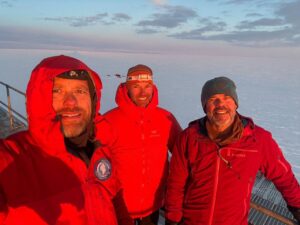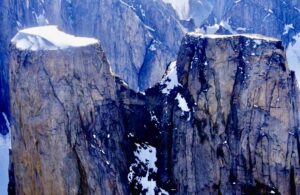Alaska has the highest rate of disappearances in the United States. Over 16,000 people have disappeared in the state’s wilderness just since 1988. The frequency of these disappearances has led to a search for answers, as well as (inevitably) to conspiracy theories. These range from alien abductions to mysterious energy vortexes. But what is the real reason so many people vanish in Alaska?
Notable disappearances
Though Alaskan disappearances did not gain notoriety until the 1970s, the first major incident happened in January 1950. A U.S. Air Force plane carrying 44 passengers from Anchorage to Minnesota lost contact two hours after takeoff. There is still no trace of the flight.
Then in October 1972, House Majority Leader Hale Boggs and Alaska congressman Nick Begich were traveling in a private aircraft from Anchorage to Juneau. The pair, along with the pilot and an aide, never showed up at their fundraising event. Around 90 aircraft, both military and civilian, searched 83,000km sq km over 39 days. Eventually, the government declared the group dead.

Hale Boggs in 1969. Photo: U.S. Government
In 1990, another plane disappeared, this time with 340 people on board. However, planes can easily disappear in such a vast landscape — into a deep canyon, in a thick forest, at the bottom of a lake.
After these high-profile incidents, there was more scrutiny of frequent disappearances on the ground: residents, tourists, hikers, mountaineers, and hunters often vanished in Alaska.
From 1960 to 2004, the remote, sparsely populated town of Nome had 24 disappearances. The FBI led an investigation amid rumors of a serial killer. Ultimately, the FBI found that alcohol abuse and the dangers of the Alaskan wilderness were most likely to blame. This has not stopped speculation that foul play was involved.
The Alaska Triangle
Most disappearances seem to take place within an area nicknamed the Alaska Triangle. Unsurprisingly, it is named after its counterpart in Bermuda. It connects the towns of Anchorage, Barrow, and Juneau and encompasses a vast acreage of wilderness.

Denali National Park. Photo: Vicky L. Miller/Shutterstock
Why do most of Alaska’s disappearances occur here? There are several factors to consider. First, Alaska has 30 percent of America’s remaining wilderness: 23 million hectares of national parks, glaciers, volcanoes, fiords, lakes, coastline, mudflats, forests, and tundra. The Triangle includes four major national parks: Denali, the Gates of the Arctic, Chugach, and Glacier Bay. Although scenic, these can be dangerous places.
Possible causes
Over 30,000 grizzlies roam the state. There are also black bears and polar bears. Aggressive encounters are few but they do occur. However, bears are, at worst, a minor cause.
The top problem in Alaska is exposure. The weather can change in minutes, and a lost hiker can quickly succumb to hypothermia. Alaska experiences an average of 164cm of snowfall per year. This snow can bury evidence within a couple of hours.

A melt pool on a glacier. Photo: DCrane/Shutterstock
The second most common cause of death is the usual peril of all mountain environments: gravity. It’s easy to slip off a ridge or into a crevasse on one of Alaska’s 5,000 glaciers. Mountaineers often go to Denali, but not everyone comes back. Thirty-five bodies remain there to this day. From 1903 to 2006, 98 climbers died on the peak.
The third most common cause of death is drowning. Alaska has over three million lakes and 3,000 rivers. Cold water sucks the heat from our bodies 25 times faster than cold air.
There is no need to posit alien abductions or energy vortexes with these real perils at play.

One of Alaska’s 5,000 glaciers. Photo: Elmar Langle/Shutterstock






